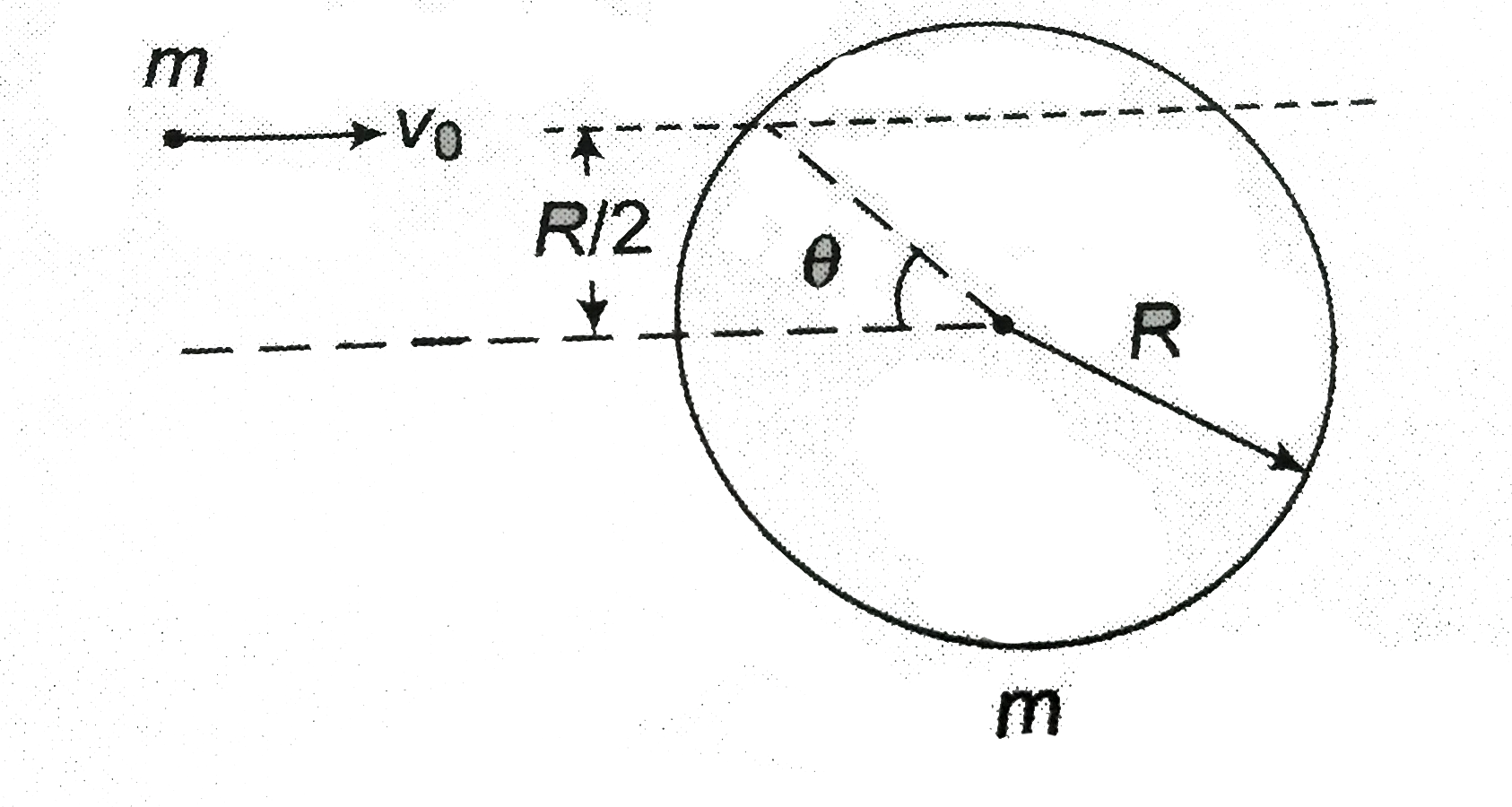Particle 1 with mass m and velocity v and particle 2 with mass 2m and velocity -2v are moving toward each other along an x axis when they undergo a one-dimensional elastic collision. After the collision, what are the velocities of (a) particle 1 and (b) particle 2? What is the velocity of the center of mass of the two-particle system (c) before and (d) after the collision?
The correct Answer is:(a)(-3v) ˆi ; (b) Particle 2 of mass 2m is brought to rest ; (c) −vˆi; (d)−vˆi
Topper's Solved these Questions
- BOOK - RESNICK AND HALLIDAYCHAPTER - CENTER OF MASS EXERCISE - Practice Questions (Single Correct Choice )47videos
CENTER OF MASS
- BOOK - RESNICK AND HALLIDAYCHAPTER - CENTER OF MASS EXERCISE - Practice Questions (More than One Correct Choice)5videos
CENTER OF MASS
- BOOK - RESNICK AND HALLIDAYCHAPTER - CENTER OF MASS EXERCISE - Practice Questions (Integer )4videos
CENTER OF MASS
- BOOK - RESNICK AND HALLIDAYCHAPTER - CAPACITANCEEXERCISE - PRACTICE QUESTION (INTEGER TYPE)3videos
CAPACITANCE
- BOOK - RESNICK AND HALLIDAYCHAPTER - CIRCUITSEXERCISE - Practice Questions (Integer Type)3videos
CIRCUITS
Similar Questions
A particle A with a mass mA is moving with a velocity v and hits a particle B (mass mB) at rest (one dimensional motion). Find the change in the de-Broglie wavelength of the particle A. Treat the collision as elastic.
View SolutionA particle A with a mass mA is moving with a velocity v and hits a particle B (mass mB) at rest (one dimensional motion). Find the change the de-Broglie wavelength of the particle A. Treat the collision as elastic.
View Solution
Knowledge Check
- Question 1 - Select One or More
In a one-dimensional collision between two particles, their relative velocity is →v1 before the collision and →v2 after the collision
A→v1=→v2 if the collision is elasticB→v1=−→v2 if the collision is elasticC|→v2|=|→v1| in all casesD→v1=−k→v2 in all cases, where k≥1 - Question 2 - Select One
Two particles moving initially in the same direction undergo a one- dimensional , elastic collision . Their relative velocities before and after the collision are →v1 and →v2. Which of the following is not correct?
A∣∣→v1∣∣=∣∣→v2∣∣B→v1=−→v2 only if the two are of equal mass.C→v1.→v2=−|→v1|2D∣∣→v2.→v1∣∣=∣∣→v2∣∣2 - Question 3 - Select One
Consider two particles of equal mass m. If one particle is stationary while the other collides with this particle obliquely with velocity v. Now, what is the angle between the velocity vectors of the two particles after the collision?
A45∘B30∘C90∘Dnone of these
A particle of mass m moving with velocity v0 collides with sphere of same mass at rest , as shown. If the surface of contact is smooth and the collision is elastic, find the velocities of particle and sphere after the collision.
 View Solution
View SolutionTwo particles A and B of masses m and 2m are moving along the X-axis and Y-axis respectively with the same speed v. They collide at the origin and coalesce into one body, after the collision. What is the velocity of this coalesced mass? What is the loss of energy during this collision?
View SolutionA particle of mass m1 moves with velocity v1 and collides with another particle at rest of equal mass. The velocity of the second particle after the elastic collision is
View SolutionA particle A with a mass mA is moving with a velocity v and hits a particle B (mass mB) at rest (one dimensional motion). Find the change in the de-Broglie wavelength of the particle A. Treat the collision as elastic.
View SolutionIn a one-dimensional collision between two particles, their relative velocity is →v1 before the collision and →v2 after the collision.
View Solution

